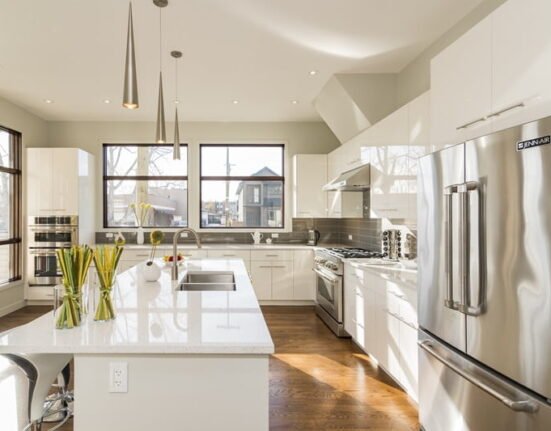HVAC stands for heating, ventilation, and air conditioning. Installing HVAC ducts in a house can be like putting huge pieces of a three-dimensional jigsaw puzzle! It can be quite hefty to get started with it.
It does not matter whether you are working to put an HVAC duct in an old house, room, or basement or want to do it during new construction. The basic rules of the process remain the same regardless of the condition of the house, room, or basement.
Below I have mentioned some basic rules one should keep in mind while engaging in the installation of ductwork and arranging a network of HVAC ducts.
1. Always Remember That Hot Air Rises And Cold Air Falls
It’s time to remember what you were taught in the 8th-grade science textbook. Hot air rises and cold air falls: keep this in mind while you engage in the process of how to install HVAC ductwork.
The ducts should be installed in a way that you can take full advantage of the natural movement of air. For instance, the large ducts of air conditioning that carry air back to the central unit ought to be installed higher up on the wall of every upper floor. This is done to capture the air that is warmer and return that air for cooling. In order to capture cold air and return it for heating, a returning duct must be installed at a lower point on the first floor.
2. The Ducts Should Be Straight
This means that to run hvac ducts that are being installed should be installed in a way that they run as straight as possible. This is to be done between the basement and the register. You are advised to make lesser turns because the more turns you make, the more the air will move slower and lesser air will make its way to the register.
3. Every Register Should Be Directly Connected To The Central Unit
If you stack all the registers on a single unit that is situated on the second and third floor, then it is a possibility that all heat would go at only one place, the second floor, for instance. Therefore, you are advised to link each register directly to the central unit by its own duct.
4. Map Out Your Duct Path Before Beginning With The Practical Part
Ductwork installation is not an easy task and requires a lot of planning in order to ensure that the ventilation of the house is not compromised. Therefore, before cutting any holes for the duct or proceeding with any other activity like that, just make sure you map out the duct path according to your house. Make sure that the ducts are able to run through the studs that may be present in the walls.
Ensure that the ducts are able to turn into a joist bay properly. The joist bay and studs in the wall must line up well enough to leave a clear and comfortable path for the ducts.
5. Use A Fitting If You Decide To Make A Turn
When your ducts make a turn, make sure that you use a fitting that is appropriate for the purpose. This proper system will keep the airflow smooth and will help it move efficiently.
6. Heating Ducts On The External Walls
When you are planning to install ducts, make sure that you plan the heating ducts on the external walls of the house. These walls are usually the oldest walls of the house. In the middle of the external wall, registers are usually played. If there are two external walls, then the registers need to be placed in the middle of each wall.
7. Insulate The Ducts That Run Through Unheated Spaces
When air passes through ducts at unheated spaces, they release a lot of heat behind. Keep this rule in mind if there is going to be an addition over the unheated spaces.
These rules are very important and even if you are not installing the ductwork by yourself, you should keep them in mind. This will make you a more informed consumer when the process of installation is going on at your house.
FINAL THOUGHTS ON HOW TO INSTALL HVAC DUCT IN 2X4 WALL
Some people, who are not experienced in this field hire professionals and have no idea about what is going on. This could sometimes lead to them getting scammed by the installer. Or, they may not be able to identify the credibility of the installer and may put themselves at risk by hiring someone who is not a professional. In order to avoid this, you must make sure you have a little idea about how the ducts run in your house and how you actually want them to be. Always make sure that you are hiring a professional from reputed companies that are transparent with the work they do.
If you are like me and like to take part in do-it-yourself projects, then obviously you must have some idea about how the ductwork design is performed. Some people do these processes on their own because they are very specific about where they want the ducts to be. Sometimes they just want to make sure that they can always change their mind multiple times before they actually get into installing HVAC ducts in their house. Other people do it to save money. There is a ton of money that one could save. However, buying the equipment on your own can be a little troublesome due to the high cost of the prices of supplies.
Whatever may be the reason or however you choose to work, make sure you are well aware of the conditions of your housing system. If you are not entirely sure, you can contact your local authorities in order to understand the duct system of your house and make sure that you do not compromise the ventilation system of your house.











